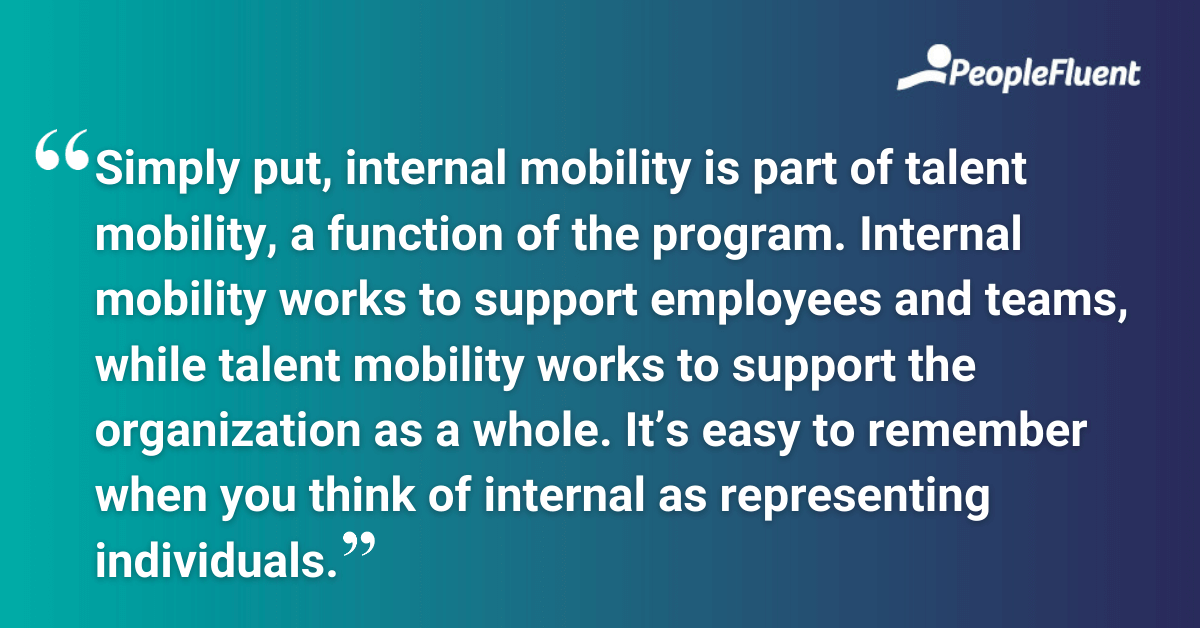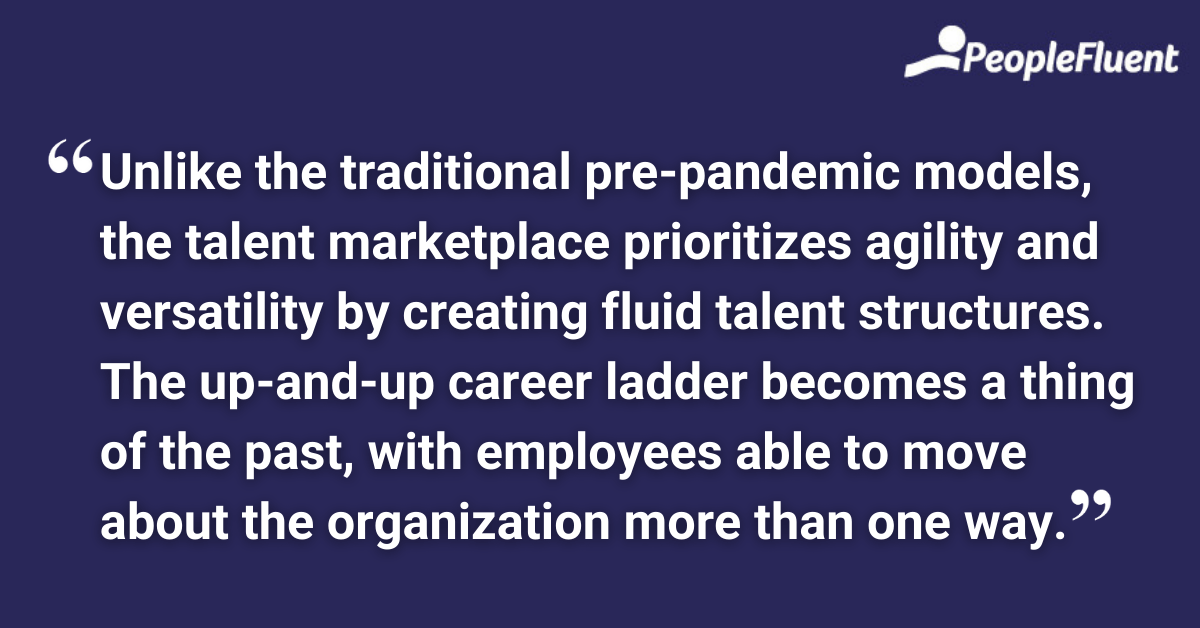Published: Mar 2, 2022Time to read: 5mins Category: Insights
Worried About Retention Rates? An Internal Gig Marketplace Could Solve Your Talent Woes
Table of Contents
Recruiters and hiring managers aren’t having the easiest time at the moment. Between a competitive, talent-driven job market and unprecedented changes to the way we work, you’d be forgiven for having a few sleepless nights. But all is not lost! In fact, there could be light at the end of the tunnel, thanks, in part, to talent marketplaces. In this article, we look at the difference between internal mobility and talent mobility as a strategy to increase retention rates, and how a talent marketplace could be the key to solving your employee retention crisis.
Since the outset of the COVID-19 pandemic, much of the narrative around work has focused on those leaving their jobs. We’ve wondered collectively about the impact on women and caretakers, witnessed the frustration and borderline outrage around office reopenings and vaccine mandates, and seen first-hand how the Great Resignation is reshaping the workforce.
But what about the folks who stayed? Those employees who chose to stick it out and keep working, despite the ups, downs, and everything in between? What are companies doing to ensure these workers remain engaged and interested?
The BBC recently wrote about this topic from the perspective of why quitting might not be the right career move for everyone, pointing out studies that show “resignation chatter can be infectious.” But with more than 40% of employed people thinking about quitting, companies have to get serious about retention—and fast!
But how? By moving to a culture that values gigs over career ladders…

MORE FROM THE BLOG | ‘Surviving The Great Resignation: How Talent Mobility Tech Can Help Build a Future-Proof Talent Marketplace’
Making the Distinction Between Internal Mobility and Talent Mobility
Retention strategies can take many forms, and recruiting leaders have touted the benefits of formalized programs for years. Present circumstances have only exacerbated the need. But introducing rigor to the process means more than creating an internal job board, especially when current employees get encouraged to apply and then don’t hear back, as is too often the case.
No, making the distinction between a half-hearted attempt and success requires a deeper dive—one that starts with understanding the difference between internal mobility and talent mobility. Simply put, internal mobility is part of talent mobility, a function of the program. Internal mobility works to support employees and teams, while talent mobility works to support the organization as a whole. It’s easy to remember when you think of internal as representing individuals.
Knowing that internal mobility is part of a larger framework, we can drill into what this looks like in practice. The aforementioned internal job board is one possible component, but at the risk of sounding redundant, it won’t move the needle on retention without an engine propelling the process forward.
This is where another approach comes into play: the talent marketplace. As Josh Bersin explains, “In many ways, the talent marketplace is the perfect reaction to the volatility brought on by the pandemic: Since its start, roughly 40 percent of U.S. workers have changed jobs, roles, or managers. If you don’t have something like a talent marketplace, you had to do all that manually.”

HAND-PICKED FOR YOU | ‘Taming the AI Beast: How AI Can Optimize Employee-Directed Career Pathing’
Solving the Retention Riddle Will Take More Than Just HR
So, what is a talent marketplace, and how does it encourage employee retention?
Unlike the traditional pre-pandemic models, the talent marketplace prioritizes agility and versatility by creating fluid talent structures. The up-and-up career ladder becomes a thing of the past, with employees able to move about the organization more than one way.
It helps to foster an internal “gig” culture that promotes engagement through empowerment, enabling employees to find internal opportunities that match their interests, upskill and reskill on the job, and hop in on high-priority projects. According to one recent study, this thinking aligns with what today’s workers want—and that’s autonomy.
Having a level of control over one’s career also speaks to the psychology behind human motivation, which corresponds to research linking autonomy to “a greater degree of satisfaction, fulfillment, and engagement at work because the outcomes are likely to be perceived as the result of their own inherent ability.”
In addition to encouraging individual autonomy, the organization also benefits from an internal gig culture by learning more about each employee. A few years ago, when aspirations were seen as strictly linear, it was almost impossible to get a holistic view of the abilities of your workforce. Now, with the right technology in place, we can source directly from our talent pools based on available skills and automatically connect people to projects. This reduces the need to look outside the organization and instead focus more energy on retaining those existing employees.
RELATED READING | ‘Growing Skills & Retaining People: How to Successfully Mentor in the Workplace’
An Employee Retention Strategy: Putting It in Practice
As Bersin succinctly puts it, “The talent marketplace represents something much bigger than HR. It’s the next form of business management. It will facilitate the evolution from the hierarchical model where you work your way up the pyramid to being an agile, creative, resilient organization where people work on multiple projects, move from role to role and embrace job sharing.”
In the era of the Great Resignation and whatever comes next, it’s increasingly critical that talent leaders look at both what they want and what they have. Much like the adage “the grass isn’t always greener on the other side,” employers can look to ease recruiting challenges by spending more time retaining talent through new gigs, chances to learn other parts of the business, and a fresh take on their current job.
MORE ON THIS TOPIC | ‘Moving On Up: 3 Ways You Can Build a Talent Marketplace to Solve Internal Mobility Challenges’
Ready to prioritize retention with a talent marketplace that matches your peoples’ skills with business needs?
A talent marketplace can help you create better processes, fill skill gaps, and future-proof your company. See it in action! Watch a recording of the recent webinar, ‘Building a Talent Marketplace for the Future With Josh Bersin’, or get a demo of PeopleFluent’s talent mobility software.